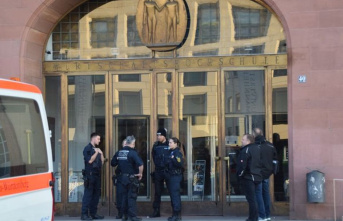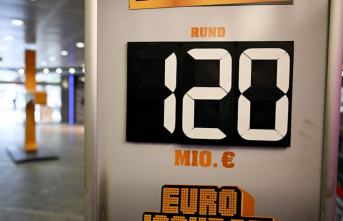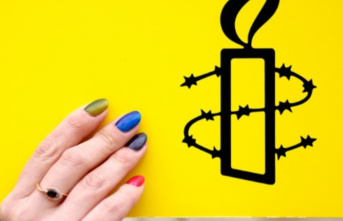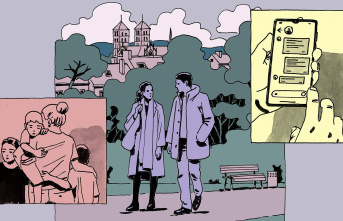After the mass panic in the South Korean capital Seoul, the number of fatalities has risen to more than 150 people, according to the latest information. Thousands of people, mostly young people, crowded the narrow streets of the Itaewon neighborhood on Saturday night for the first Halloween celebrations since the start of the 2020 coronavirus pandemic. This resulted in what is often called "mass panic".
How does such an accident happen?
A study by the Max Planck Institute for Human Development, Disney Research Zurich, ETH Zurich and Rutgers University has devoted itself to precisely this question. The results were published in the Journal of the Royal Society Interface in 2016.
The international research team placed 36 subjects in an emergency situation in a three-dimensional, virtual environment. "All test subjects sat in front of computer screens at the same time and were asked to control an avatar. In several experiments, the researchers examined the behavior of the test subjects by giving them various tasks and stressing them when solving them," the article says.
The scientists were able to prove that the behavior of the study participants in the virtual space can largely be transferred to the behavior in the real world.
In one example, subjects were asked to walk past one another in a narrow hallway without touching. "The avoidance behavior in virtual space was the same as that already shown in experiments in the real world: 95 percent of the subjects chose the right side in order to pass each other." Previous studies have shown that Europeans mostly intuitively walk on the right side.
In order to see how the subjects behave in an emergency situation, the researchers simulated an evacuation situation in a complex building with four exits, of which only one could be used. Although the majority of the group did not know which exit door was the right one, there were individuals who were guided to the right door by the directional arrow on their screen.
However, the rest of the group didn't know who exactly had the advantage. In addition, the stress level was increased by putting the subjects under time and financial pressure. The building had to be evacuated within 50 seconds. If the test persons did not manage this, this had a negative effect on the bonus payments at the end. There was also poor lighting, red flashing lights and fires at the locked exit doors.
The result of the investigation: collisions and crowds among each other increased rapidly under stress. It was most dangerous in places where decisions had to be made, where space was tight and backwaters formed, or where corridors ended in dead-ends, forcing people to turn back and walk against the current.
In addition, the researchers looked at the group dynamics during the stressful evacuation situation. It has been shown that people under high stress and in tight quarters are more exposed to social signals in a group than in less stressful situations. This means they are more aware of where a group is going, what they are doing, how they are feeling and are therefore more influenced by the group. The results suggest that an individual under the influence of these strong social cues is more likely to follow a group, quickly creating crowded herd behavior that can lead to accidents.
"We were able to show that human behavior in virtual space is similar to that in real life, which not only opens up new possibilities for behavioral research. In the future, city planners or architects could also use such virtual environments, for example to test evacuation plans," says the Scientist Mehdi Moussaïd.
At the beginning of the accident in Seoul, rescue workers said they were treating a large number of people with cardiac arrest. This is a common occurrence in such mass casualties. The so-called mass panics often lead to suffocation and ventricular fibrillation, which often leads to death. Ventricular fibrillation is an uncontrolled, very rapid contraction of the heart muscle that can lead to unconsciousness and cardiac arrest.
There were also such reports of alleged heart attacks during the mass accident at the Astroworld Festival last year, as reported by the Correctiv research network.
The most common cause of death is "traumatic asphyxia" - a threatening state of asphyxiation. With this type of asphyxia (lack of pulse) severe injuries to the chest caused by the crowding or trampling can lead to a cessation of air and gas exchange in the body. Lack of oxygen can cause victims to suffocate. However, this is not a heart attack caused by deposits in the coronary arteries.
In addition, mass accidents can result in injuries to internal organs, broken bones or craniocerebral trauma.
Even if you are stuck in a cramped crowd, as was the case recently in Seoul, panic or even hysteria is often not the trigger. Researchers therefore consider the term "mass panic" to be misleading, as Dirk Helbing, an expert in the field of panic research at ETH Zurich, explains.
"Most of the time, the disaster doesn't happen because people go into a state of psychological panic. By the time such a state of panic occurs, it's often too late, which means you're often already in a life-threatening situation. The dead are the result of a physical, not a psychological effect," he said "jetzt.de". Panic researchers therefore prefer to speak of "crowd disaster" or mass disaster.
"When psychological states of anxiety arise, it is as a result of physical forces, which can be life-threatening," explains Helbing, who calls these forces "crowd turbulences."
A panic among the people is not the trigger of such catastrophes. It's mainly the density of people. It's often assumed that a crowd, for some reason, will panic and push in a direction, crushing people, Helbing said. But such cases are very rare.
An example of people not panicking in emergencies is the 1977 Beverly Hills Supper Club, Kentucky fire that killed 165 people. Interviews with survivors had revealed that the behavior was orderly and non-competitive. You helped each other a lot more.
When people stand too close together, movements are transmitted through the crowd, explains Helbing. If someone then stumbles, there can be a domino effect with people falling on top of each other and being crushed.
"The root cause of most crowd disasters is physics, not psychology."
In order to prevent catastrophes like the one in Seoul, a good security concept is very important. For example, it must allow masses of people to flow away quickly and the density in narrow places to be reduced.
Anyone who finds themselves in such a situation should try to remain calm, advises the practice for psychosomatic medicine and psychotherapy in Cologne. You should try to make other people in the situation feel like "everything will be fine," but still take the fear seriously. It also helps to hold other people accountable to calm the crowd. Speaking slowly and clearly and appearing confident conveys security.
In addition, one should keep away from solid obstacles such as pillars or walls, explains Mehdi Moussaïd from the Max Planck Institute for Human Development in Berlin in an interview with "Spiegel". This is where the risk of injury is greatest. He advises moving in the middle if possible and: "Always stay on your feet! If you fall, you run the risk of others who are being pushed stepping on you unintentionally and injuring you."












